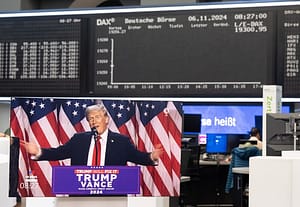Crude oil is trading in negative territory near $67.65 in the early hours of Wednesday, reflecting a weak market sentiment.
This decline, in my opinion, comes at a critical time as geopolitical and economic concerns are increasingly affecting price movements.
The current price reflects multiple pressures, including political tensions on one hand and increased oil production by OPEC+ on the other.
OPEC+ recently announced plans to increase oil production starting in April, a decision that follows a long period of production cuts aimed at supporting prices and maintaining market stability.
This move by OPEC+ seems to align with a new policy that may be driven by political maneuvers, especially amidst the rising tensions of recent times.
The expectation that OPEC+ will prioritize politics over price may be accurate, and I believe this production increase could exert further pressure on the market, particularly at a time when the global economy is facing significant challenges.
Additionally, U.S. crude oil inventories fell by 1.455 million barrels last week, more than expected, as the forecast was a decline of only 300,000 barrels.
This inventory drop suggested a potential improvement in oil demand, but its impact on prices may be limited due to other developments, such as OPEC+ decisions and U.S. tariff threats.
From my perspective, U.S. President Donald Trump’s repeated threats of imposing tariffs on Canada, Mexico, and China are increasing uncertainty in the market. The new tariffs, which are set to come into effect in March, could significantly affect trade relations, putting pressure on oil prices. If these tariffs are implemented, energy demand is expected to decrease, leading to a drop in prices. This is particularly significant as Canada and Mexico are two of the largest crude oil suppliers to the U.S., and tariffs could negatively impact their oil exports, especially for Canada, which relies heavily on exporting oil to the U.S. through pipelines designed specifically for this purpose.
In terms of geopolitical movements, market uncertainty is increasing due to the recent standoff between the U.S. and Ukraine. The current tensions could exacerbate pressures on global markets, including the oil market. The escalation in these standoffs makes it difficult to predict short-term market developments, adding to price volatility. These tensions directly affect the market’s hopes for easing sanctions that may have contributed to stimulating the global economy, which is reflected in the fluctuations in oil prices, as evidenced by the recent rise in Brent crude.
It appears that speculators continue to reduce their positions in the oil market due to these volatile conditions. According to the latest data, speculators have significantly reduced their long positions in Brent crude and crude oil, reflecting a cautious and wait-and-see approach in the markets. This behavior from investors also reflects a general trend towards reducing risk amidst uncertainty about future market directions. Speculators are attempting to minimize their long positions in crude oil to their lowest level since 2010, reflecting increased concerns in the markets, especially with growing fears of the impact of tariffs on Canada and Mexico, which together account for a significant portion of U.S. crude oil imports.
While Mexico has more flexibility in redirecting its exports to other markets, Canadian producers face greater constraints. If tariffs are imposed on Canadian crude oil, it is likely that Canadian producers will have to accept deeper discounts on oil prices, which could further pressure prices.
On another front, all eyes remain on China and the government’s work report, which is expected to reveal growth targets for 2025. While some suggest that these targets may remain at 5%, any signs of changes in China’s fiscal and monetary policy could significantly impact the market. Increasing trade tensions could have indirect effects on global energy demand, especially amidst economic slowdown.
In conclusion, despite the recent drop in U.S. oil inventories, I believe the ongoing economic and geopolitical challenges, including the increase in OPEC+ production and U.S. trade threats, keep the market in a state of instability. Investor confidence in the market is declining, and they are reducing their positions in oil, which makes it likely that crude oil will continue to face negative pressures that could limit any potential gains shortly.






Leave a Comment